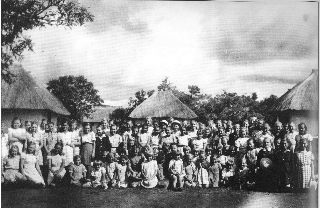Noted while browsing:
While scanning the CBC website recently I came across an article headlined “To spank or not to spank?” and noted the following paragraph in particular:
Sweden was the first country in the world to introduce anti-spanking legislation, in 1979. Finland, Norway and Austria followed suit over the next decade. As of March 2009, 24 countries had introduced a full ban on corporal punishment for children — both at home and in school. Italy and Nepal have yet to confirm legislation that would outlaw corporal punishment for children, although both countries have supreme court rulings in favour of prohibition.
I fully expected to see Poland among the 24 enlightened countries, and would have liked to see some mention of the fact that such a law existed in Poland before the war but it seems not even Poland is aware of the existence of this progressive law in its interwar period.
I quote below an entry from the minutes of a 1944 meeting between Polish officials and British officials in Tanganyika (Tanzania) concerning the discipline of children in the Polish refugee settlements in what was then British East Africa.
Child Delinquency:
The British wanted stronger measures against naughty children. The Poles explained that corporal punishment of children was forbidden by Polish law and against Polish tradition (emphasis mine). There were other measures such as admonishment by schoolmasters, extra school tasks and consultations with parents. Colonel Bagshaw replied that he knew of two children in Northern Rhodesia aged 8 and 10 who were out of control and he recommended that they be sent before the British Magistrate and then sent to reform school.
This topic was to crop up several times, and each time the Polish authorities defended their position – and the welfare of the Polish children – on the grounds of Polish law. The wartime Government-in-Exile was very much involved in the welfare of these Polish refugees, ensuring that their citizens would be treated as temporary exiles and not as stateless refugees, subject to their own laws a befitted free people. It was this distinction that provided the people living in the Polish settlements with the full protection of their government-in-exile.
Whatever the material limitations of the wartime refugee settlements, the vital component in the rehabilitation of the Polish refugees was the right to human dignity, and from this right flowed all the other rights — housing, health care, education, cultural and religious freedom, and, most certainly, freedom from physical abuse.
Let us hope that Poland soon joins the 24 enlightened countries that respect the innate human dignity of children. Doing so would restore yet another long forgotten element of Polish culture. CR
Imagery
Photo of Polish children in Africa
Irene Tomaszewski is a writer and editor of CR. She is the co-author, with Tecia Werbowski, of "Codename Żegota: The Most Dangerous Conspiracy in Occupied Europe," published by Praeger in 2010, and translator /editor of "Inside a Gestapo Prison: The Letters of Krystyna Wituska" published by Wayne State University Press in 2005.
To Spank [Your Child in Poland] or Not?
Posted by Irene Tomaszewski on August 8, 2009 at 10:30 amNoted while browsing:
While scanning the CBC website recently I came across an article headlined “To spank or not to spank?” and noted the following paragraph in particular:
Sweden was the first country in the world to introduce anti-spanking legislation, in 1979. Finland, Norway and Austria followed suit over the next decade. As of March 2009, 24 countries had introduced a full ban on corporal punishment for children — both at home and in school. Italy and Nepal have yet to confirm legislation that would outlaw corporal punishment for children, although both countries have supreme court rulings in favour of prohibition.
I fully expected to see Poland among the 24 enlightened countries, and would have liked to see some mention of the fact that such a law existed in Poland before the war but it seems not even Poland is aware of the existence of this progressive law in its interwar period.
I quote below an entry from the minutes of a 1944 meeting between Polish officials and British officials in Tanganyika (Tanzania) concerning the discipline of children in the Polish refugee settlements in what was then British East Africa.
Child Delinquency:
The British wanted stronger measures against naughty children. The Poles explained that corporal punishment of children was forbidden by Polish law and against Polish tradition (emphasis mine). There were other measures such as admonishment by schoolmasters, extra school tasks and consultations with parents. Colonel Bagshaw replied that he knew of two children in Northern Rhodesia aged 8 and 10 who were out of control and he recommended that they be sent before the British Magistrate and then sent to reform school.
This topic was to crop up several times, and each time the Polish authorities defended their position – and the welfare of the Polish children – on the grounds of Polish law. The wartime Government-in-Exile was very much involved in the welfare of these Polish refugees, ensuring that their citizens would be treated as temporary exiles and not as stateless refugees, subject to their own laws a befitted free people. It was this distinction that provided the people living in the Polish settlements with the full protection of their government-in-exile.
Whatever the material limitations of the wartime refugee settlements, the vital component in the rehabilitation of the Polish refugees was the right to human dignity, and from this right flowed all the other rights — housing, health care, education, cultural and religious freedom, and, most certainly, freedom from physical abuse.
Let us hope that Poland soon joins the 24 enlightened countries that respect the innate human dignity of children. Doing so would restore yet another long forgotten element of Polish culture. CR
Imagery
Photo of Polish children in Africa
Related Posts: